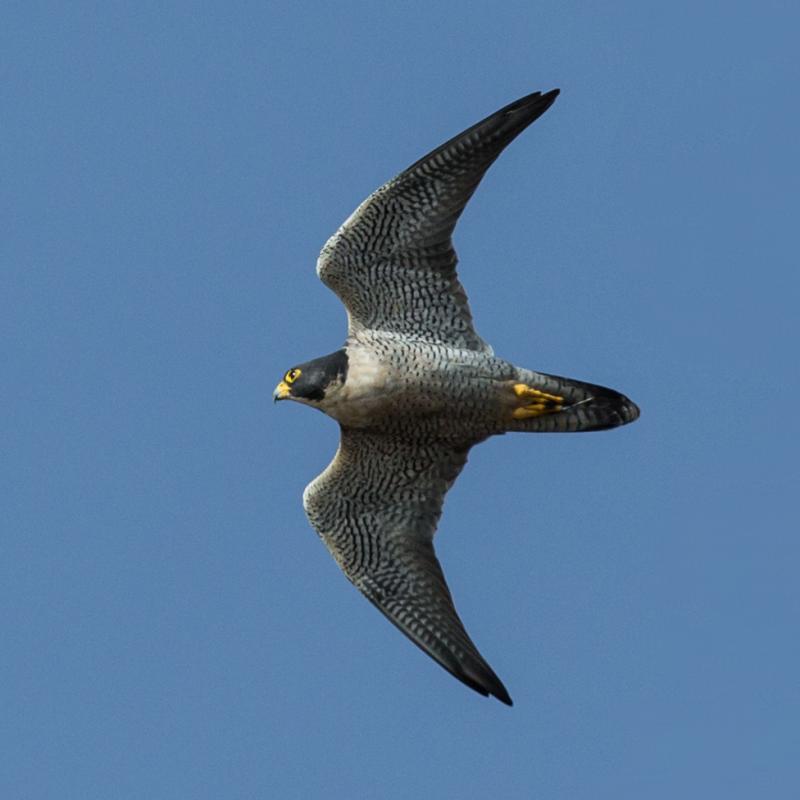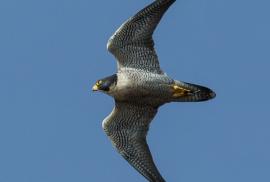Guide to Boreal Birds
Overview
Following an alarming decline during the 1950s and 1960s, this spectacular falcon, also called the "Duck Hawk," is on the increase again, now that pesticides that caused thinning of eggshells have been banned. After an intensive program of rearing birds in captivity and releasing them in the wild (a process called "hacking"), this large falcon is reclaiming nesting grounds from which it disappeared a few decades ago. A favorite nesting site nowadays is a tall building or bridge in a city; these urban Peregrines subsist mainly on pigeons.
Description
15-21" (38-53 cm). W. 3' 4" (1 m). A large robust falcon with a black hood and wide black "mustaches." Adults slate-gray above and pale below, with fine black bars and spots. Young birds brown or brownish slate above, heavily streaked below.
Voice
Rasping kack-kack-kack-kack, usually heard at nest; otherwise generally silent.
Nesting
2-4 cream or buff eggs, spotted with reddish brown, placed in a scrape with little lining on a cliff or building ledge or in an abandoned bird's nest.
Habitat
Open country, especially along rivers; also near lakes, along coasts, and in cities. Migrates chiefly along coasts.
Range/Migration
Breeds from Alaska and Canadian Arctic south locally through mountainous West, and sparingly in East. Winters coastally, north to British Columbia and Massachusetts. Also in southern South America and Old World.



